

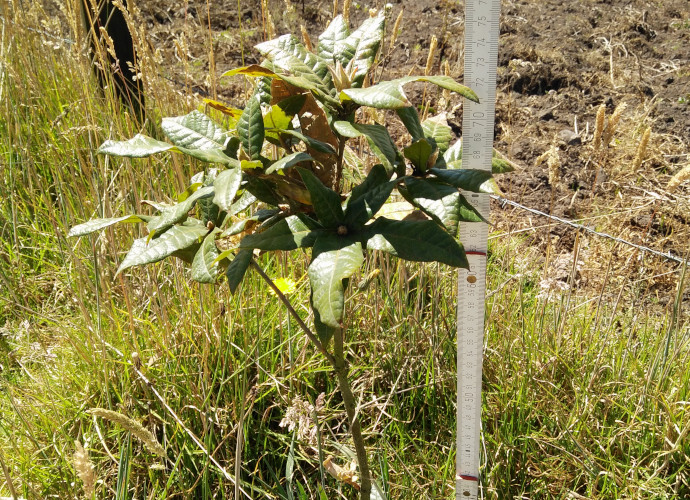
After almost one year we are collecting information on how the native species we planted are coping with “El Niño”(ENSO) during 2023-2024
Currently we have re-introduced 9 native tree species into the high mountain environment in Soracá, Boyacá region of Colombia, each of them with different purposes.
Together, we are also using shrub or bushes to complement the ecosystem services provided, increasing biodiversity and water retention capacity on this traditional agricultural landscape.
These plantS present different traits that are of interest for the andean ecosystems, this is why at GUA·QUYE Agroforestal we are seeking to understand how these traits complement each other, thus, optimizing productive systems in better harmony with nature.
Here you can find some information about the species we are working with:
The Andean Oak tree (Quercus humboldtii L.) also known as White oak is one of the two oak species existing in Colombia. The tree’s reported species-richness and biodiversity registers up to 222 different species associated under oak forests, located between 2550 and 3415 m a.s.l.
This fast growing tree Loqueto o Mangle de tierra fría (Escalonia pendula Ruiz & Pav.), is distributed between the 2000 and 3000 m a.s.l., reaching up to 10 m. We chose it for its abundance of pendular inflorescences and fruits that feed insects and birds from the andean ecosystem. Furthermore, is dense leaf structure is ideal for harvesting water from fog , reason why iot is also use in waterbasins protection.
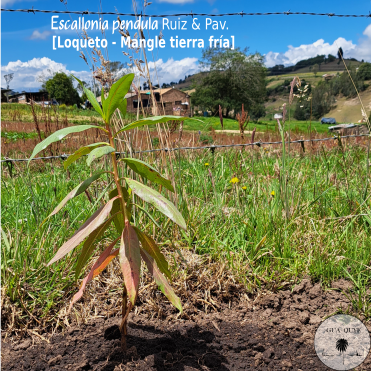
The name of this tree,(Oreopanax bogotensis Cuatrec.)translates hand of a bear and it is considered to induct of forest restoration due to its fast growing and cycling properties by losing part of its leaves. It is one of the first species we selected, also for high bluming and dense leave systems that host and attracts birds and insects. It is also associated with soil recovering processes.
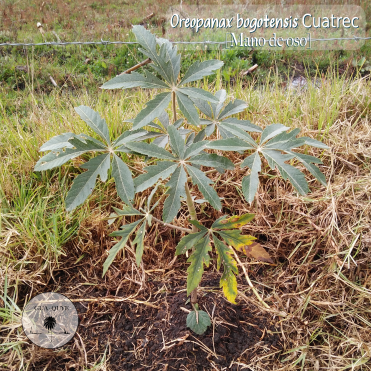
El Laurel (Morella spp.) es ampliamente utilizado en sistemas agroforestales con sus hojas y frutos alimentando la avifauna y su madera también aprovechada para cercas y leña. Se distribuye entre los 1500 y 3500 m s.n.m. En nuestro caso, es la especie que ha presentado el más rápido crecimiento y muy buena formación de ramas.
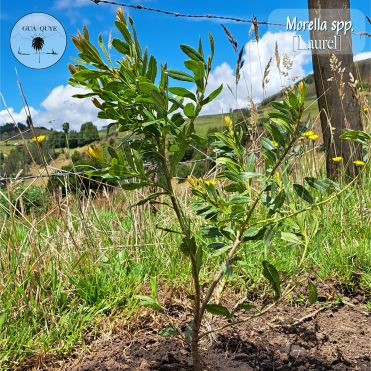
The Guayacán tree (Lafoensia acuminata Ruiz & Pav.), is a slow growing tree that reaches up to 30 m high. Due its good quality wood characteristics , it had completely dissapeard from our región, but now there are 5 units in or land. It is considerd a potential ornamental tree, feeding birds with its capsule fruits, that when ripe, show a dark very intense dark color.Was planted in honor to “Don Jesús Guayacán”, who always helped us in our land.

The sauce (**Salix humboldtiana**Wild.), reaches up to 15 m and it is associated with humid sites, mainly at the river or creek banks. It has an ache-type crown with a light leaves distributionthat requires plenty sunlight while growin. We are testing its behaviour under our heigh conditions and soil.
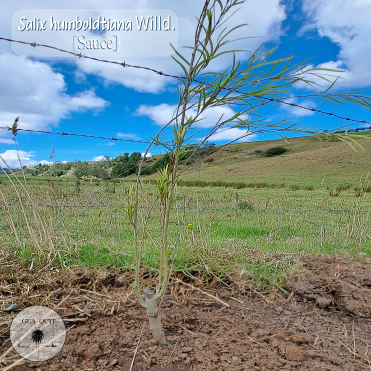
The flormorado (in spanish, purple-flowered ) (Tabebuia rosea D.C.) it is a tree with abundant flowering very intense and colorful, wanted mainly for ornamental purposes. It reaches up to 35 m height with a crow providing good shadow. Attract birds and insects due to its abundant flowering.

Alos known as Chicala(Tecoma stans), is a meliferous specie very interesting for birds. It has been used as ornamental tree for its yellow flowers, which at the same time can be used to aromatize jellies. These trees,that can reach up to 15 m height, were a donation to our project form Erika, Alejo y Pablito and its wood can be used for polls too.
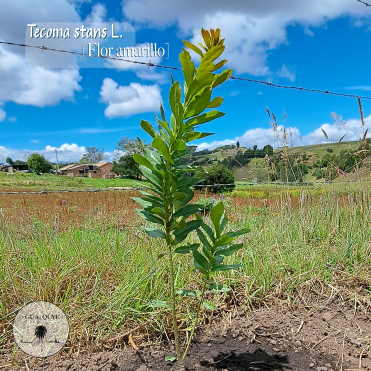
El Cedar tree(Cedrella montana), was the last tree specie we planted recently in may 2024. We are testing 3 exemplars of this specie.
Here you can find some information about the bushes species we are working with:
The andean blueberry (Vaccinium meridionale Swatz.) known also as Agraz, Mortiño, Camueza or Vichacha, is a shrub that grows up to 10m and well adapted to the andean zone of Colombia between the 2200 and 3200 m a.s.l. Grows in the wild in colombian regions of Antioquia, Boyacá, Cundinamarca, Cauca, Huila, Nariño, and Santander with a potential to be grown as a productive fruit crop.
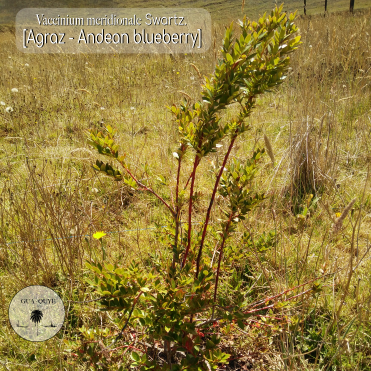
1- Mangle de tierra fría (Video)
2- Return of the Andean Oak 2024


Principality of Andorra

Online-Live
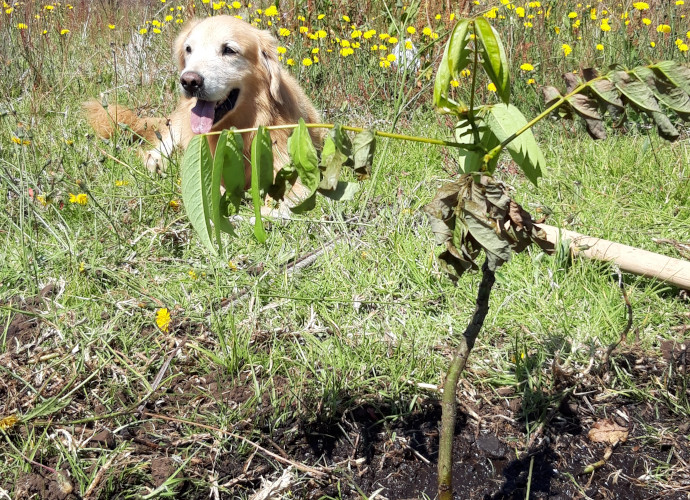
Soracá, Colombia,